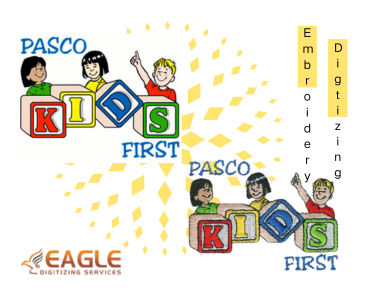What Size Needle Do I Need for Embroidery?
Embroidery is a timeless craft that combines creativity with precision. Whether you're a beginner or a seasoned expert, choosing the right needle size is crucial for achieving the best results. The needle size you select can significantly impact the quality of your embroidery work, affecting everything from the ease of stitching to the final appearance of your design.
The size of the needle you need largely depends on the type of fabric you're working with and the thickness of the thread. For instance, a finer needle is ideal for delicate fabrics, while a thicker needle is better suited for heavier materials. Understanding the relationship between needle size, fabric, and thread is essential for any embroidery project. This knowledge not only enhances your embroidery digitizing skills but also ensures that your designs are executed flawlessly.
Understanding Needle Sizes
Embroidery needles come in various sizes, typically ranging from 60/8 to 120/19. The first number indicates the European size, while the second number represents the American size. A smaller number corresponds to a finer needle, which is suitable for lightweight fabrics and threads. Conversely, a larger number indicates a thicker needle, ideal for heavier fabrics and thicker threads.
Choosing the Right Needle for Your Fabric
When selecting a needle size, consider the fabric's weight and weave. For lightweight fabrics like silk or chiffon, a size 60/8 or 70/10 needle is recommended. These finer needles prevent damage to the delicate fibers. For medium-weight fabrics such as cotton or linen, a size 75/11 or 80/12 needle is appropriate. These sizes provide the right balance between strength and finesse.
Needle Size for Different Threads
The type of thread you use also influences needle selection. For fine threads like silk or rayon, opt for a smaller needle size to ensure smooth stitching. For thicker threads such as wool or metallic, a larger needle size is necessary to accommodate the thread's bulk. This consideration is crucial for maintaining the integrity of your embroidery design.
Specialty Needles for Unique Projects
In addition to standard embroidery needles, specialty needles are available for specific techniques. For example, a ballpoint needle is ideal for knit fabrics, as it slides between the fibers without causing damage. A metallic needle, with its larger eye, is perfect for metallic threads, reducing friction and breakage.
Tips for Successful Embroidery
To ensure successful embroidery, always test your needle and thread combination on a fabric scrap before starting your project. This practice helps you identify any potential issues and make necessary adjustments. Additionally, regularly changing your needle is essential, as a dull needle can cause skipped stitches and fabric damage.
Conclusion
Selecting the right needle size is a fundamental aspect of embroidery that can greatly influence the outcome of your work. By understanding the relationship between needle size, fabric, and thread, you can enhance your embroidery skills and produce beautiful, high-quality designs. For those seeking professional assistance, Eagle Digitizing excels in providing professional embroidery digitizing services, ensuring every design is crafted with unmatched precision.


.png)
